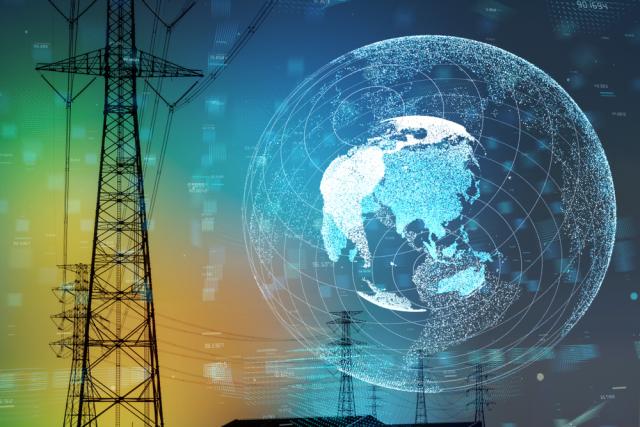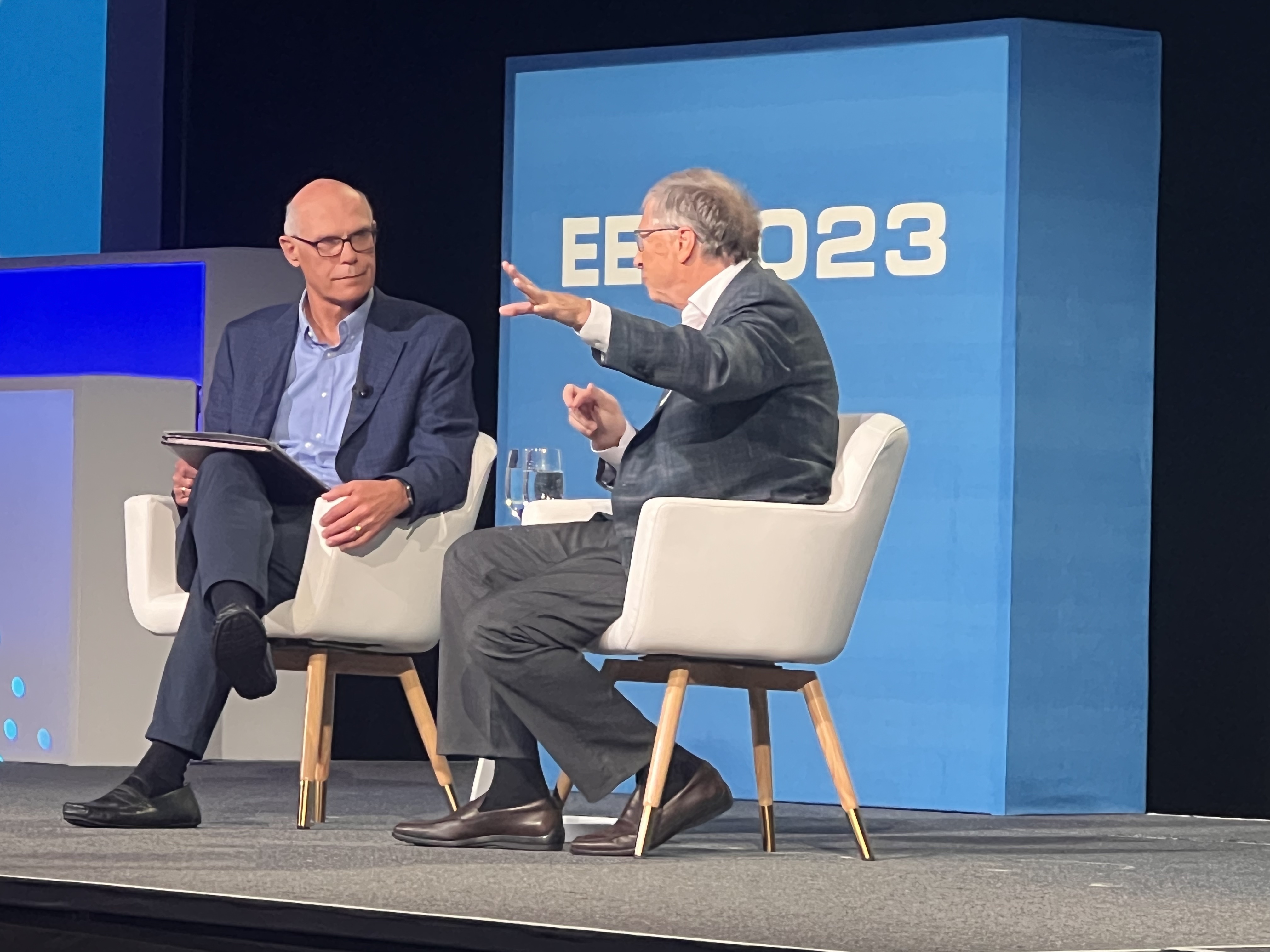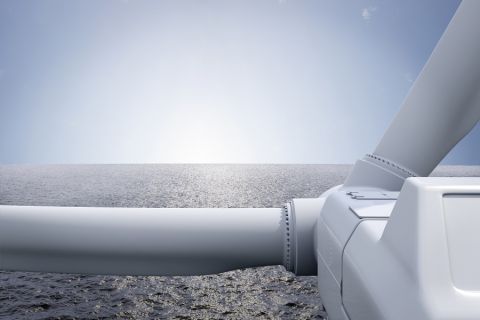
As hard-to-abate industries aim to decarbonize operations, technology and electrification will play a key role, Microsoft Founder Bill Gates said at a conference in Austin, Texas. (Source: Shutterstock)
AUSTIN, Texas—Ask Bill Gates what will be important to get to net-zero by 2050, and electrification is among the thornier answers.
The task will involve tackling processes, such as in the steel and cement industries, that haven’t been changed for decades; long-distance trucking; and shipping and airplanes, which Gates called the most difficult to decarbonize.
“We will never match with batteries the sort of per volume, per kilogram energy density of hydrocarbons, although some of it can be electrified—about 20%,” Gates said of the energy density of the aviation fuel during the EEI 2023 conference. “There, we actually need to make hydrocarbon fuels with electricity—so called e-fuels.”
As hard-to-abate industries aim to decarbonize their operations, including through use of hydrogen, electrification will play a key role. Electricity generation will need to grow 2 ½ times without increasing carbon and methane emissions, Gates said.
“I’d say the miraculous green grid that we need that underpins every solution to this thing is the most difficult of all,” Gates said.
The co-founder of software giant Microsoft has been active in the energy arena, having penned the book “How to Avoid a Climate Disaster” and founded Breakthrough Energy. With a goal of scaling technologies to help the world hit climate goals, Breakthrough finances technology while also serving as a policy advocate.
Energy transition talk continues as energy players put plans into action to slow global warming and reduce emissions. The shift comes as part of a worldwide push to move away from carbon-intensive fossil fuels and big bets on renewables.
While permitting and planning have been flagged as challenges, according to industry experts, technology innovations are pushing the world closer to its net-zero goals.
Geothermal player Fervo Energy, one of the 100-plus companies backed by the billionaire, was the first to come to mind for Gates.
“Their belief is that in most of the United States they’ll be able to provide geothermal generation—completely clean, 24 hours a day, no weather dependence at all—at costs that will be competitive to the lowest cost generation in the United States: natural gas,” Gates said. “That’s a big dream, but the potential scale given their approach is quite gigantic.”

Nuclear energy
Gates also spotlighted Nuclear tech company TerraPower, a company he founded and that he leads as board chairman. Working with GE Hitachi Nuclear, TerraPower developed Natrium technology—a sodium fast reactor combined with a molten salt energy storage system that provides clean energy to power grids.
“For over 50 years, everyone has said sodium cooling is the way to go because you eliminate completely the safety issues that became problematic in both Chernobyl and Fukushima,” Gates said.
Then, there is fusion, including a project underway by Commonwealth Fusion Systems, an MIT spinout that uses a tokamak design to produce controlled fusion reactions in hot plasma. The company, which describes tokamak as an “experimental machine designed to harness the energy of fusion,” aims to have a commercial electricity plant in the early 2030s.
“The magic is actually the ability to have these very high-powered magnets, which mean that the size of the device is to the cube of the power of the magnet. … So that's very promising,” Gates said. “Amazingly, that same technology, the superconducting high-power magnet, that’s the same thing that will probably be used in some of the transmission breakthroughs where you can use transmission that’s superconducting now that that material has been reduced in cost by over a factor of ten.”
Innovations are sometimes connected, he added.
“We’ve looked worldwide to find the entrepreneurs and almost 90% are here in the United States.”
Speaking on transmission and the grid, he said batteries will play a role in reliability, particularly long-duration storage. And customers will as well, meaning collaboration will be crucial.
“When are they going to want green hydrogen and what does that load look like?” Gates asked. “If you put into the model even, say, 10% of their carbon emissions having direct air capture, the direct air capture companies alone would be one of the biggest customers of utilities.”
Policy, planning, price, more
Besides technology, the focus is also on policy, planning and price.
“Right now, the three Ps are daunting to me,” he said. “Innovation can help. Being able to sell three times as much power down the right-of-way with a modest capital cost, say, [of] less than what you paid to build the right-of-way to begin with."
“Per capacity, the rewiring will be very attractive. We need to have incentives that somebody can come up with that risk capital and say, ‘if that capacity ends up being used, I may get a particularly high return on my capital, but I'm willing to take the risk that that capacity is not used.’”
So bringing some risk reward private sector incentives is important, he said.
Oil and gas surfaced when the conversation turned to being clear-eyed about opportunities to reach net-zero.
“If you go to an oil and gas meeting, you’re kind of saying, ‘yeah, we don’t want internal combustion engines anymore,’ and that’s your primary customer. But maybe you guys can sequester some carbon for us and bury some nuclear waste for us,” Gates said amid laughter from the audience at the utility-focused conference. “Maybe we can do air pressured storage for the electric utilities. So, some of your skills are interesting, but your primary business model, we’re trying to make sure that the demand is eviscerated—at least sitting here I can say that.”
Electrification is what it’s all about, he added.
Recommended Reading
Marketed: EnCore Permian Holdings 17 Asset Packages
2024-03-05 - EnCore Permian Holdings LP has retained EnergyNet for the sale of 17 asset packages available on EnergyNet's platform.
Marketed: Navigation Powder River Eight Leasehold Lots in Wyoming
2024-04-09 - Navigation Powder River has retained EnergyNet for the sale of eight non-producing federal leasehold lots in Converse and Campbell counties, Wyoming.
US Proposes Second GoM Wind Lease Auction
2024-03-20 - Combined, the four proposed areas for offshore wind have the potential to power about 1.2 million homes if developed, according to the Interior Department.
Hess: Pre-emption Provision Doesn't Apply to Buyout Deal With Chevron
2024-02-27 - Hess Corp. said on Feb. 27 that a pre-emption provision does not apply to its proposed $53-billion buyout by Chevron Corp. and it remains "fully committed" to the deal.
EQT, Equitrans Midstream to Combine in $5.5B Deal: Reports
2024-03-11 - EQT Corp.'s deal would reunite the natural gas E&P with Equitrans Midstream after the two companies separated in 2018.


